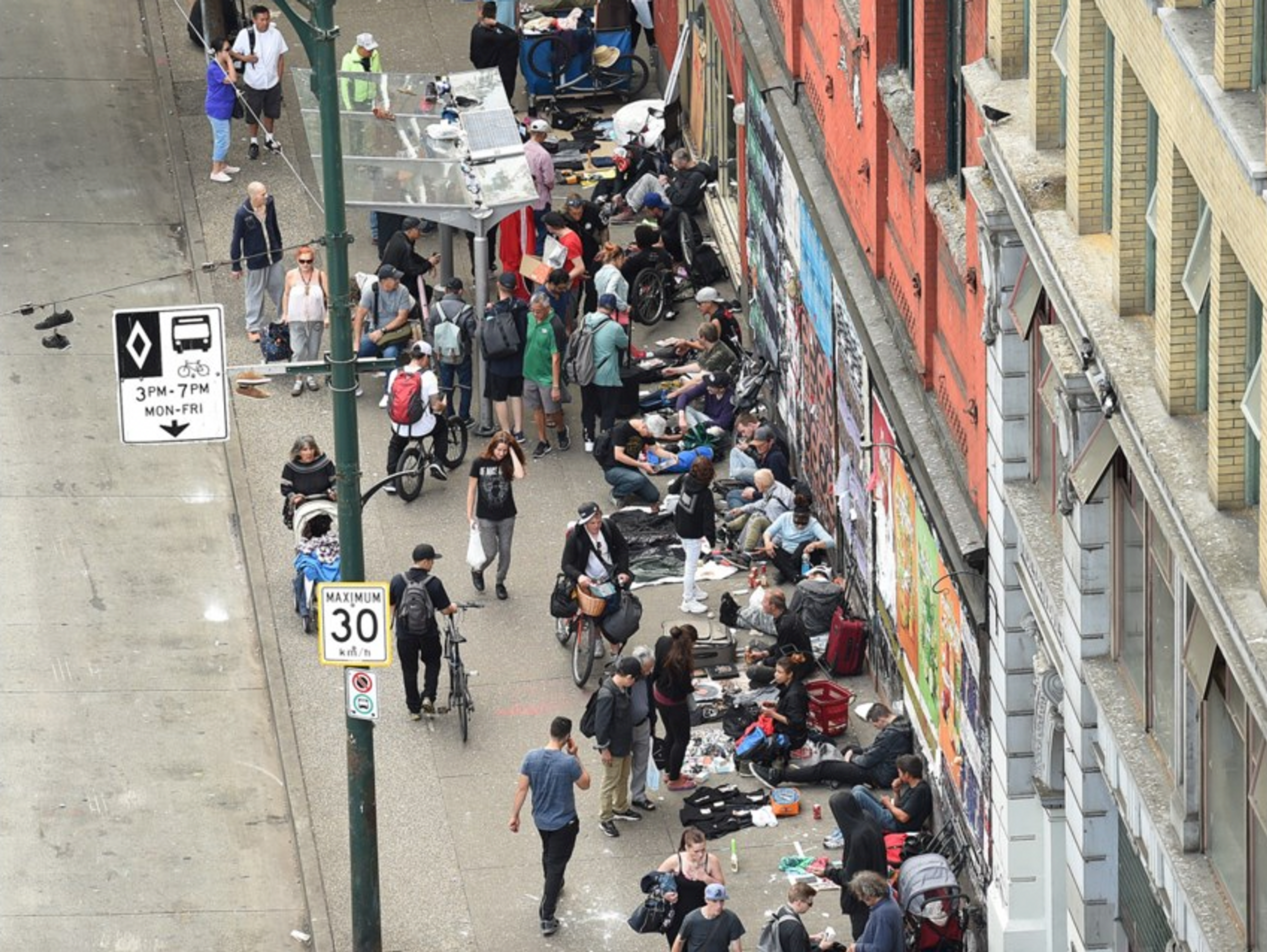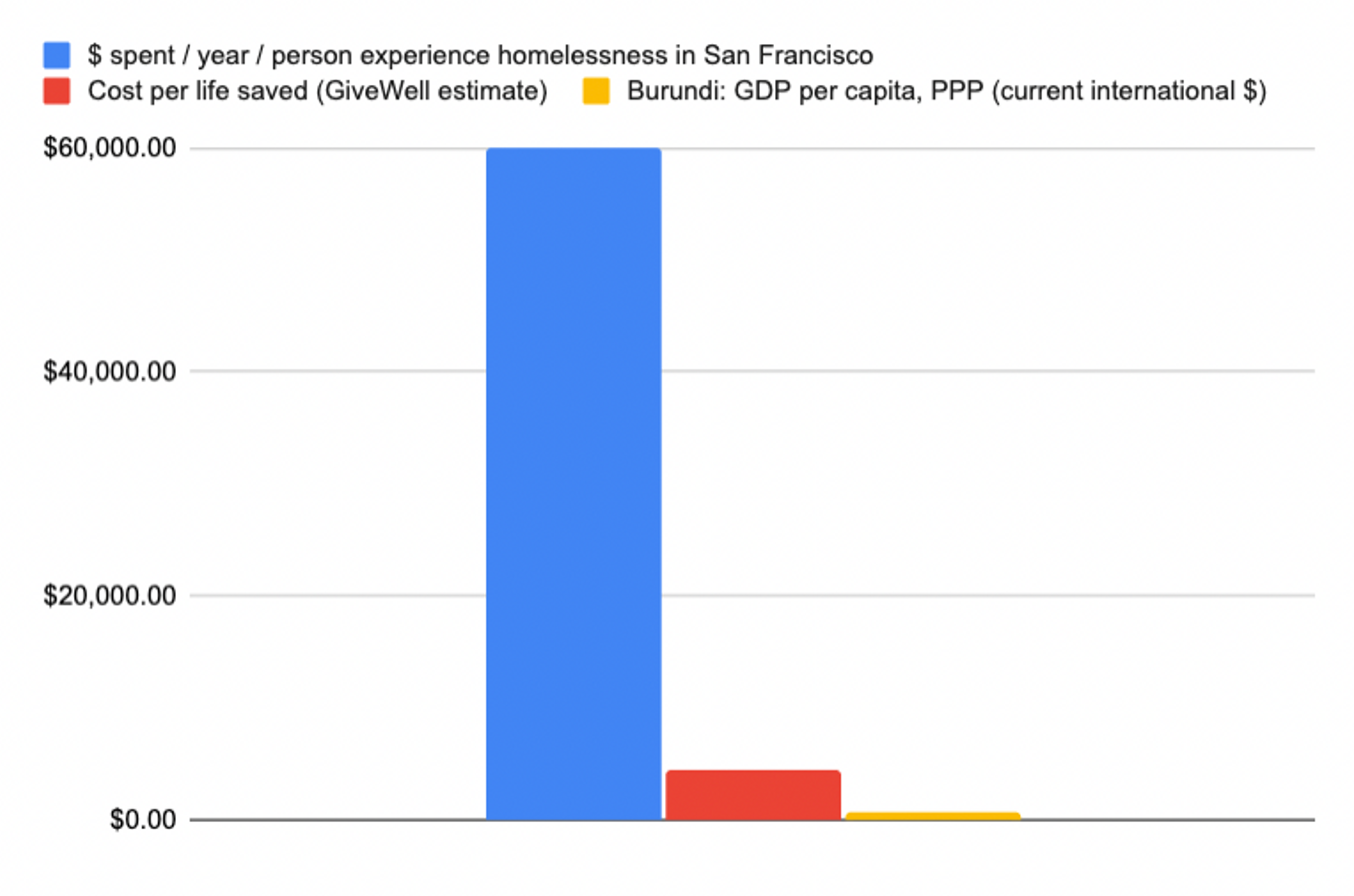This design thinking technique can make you a more effective giver
Think about the most important cause to you — maybe it’s climate change, criminal justice reform, gender equality, or education policy, for example.

Why do you care about this cause in particular?
Now think about another cause that is important to you, but not quite as much as the previous one. Why isn’t it as important as the first cause? What’s the difference?
For many of us, it's hard to articulate what exactly matters to us and why. But getting to the root of what we really care about can often have surprising implications for where we should donate. In fact, figuring out what you truly care about could be one of the most important steps you take to increase your impact.
Here’s a framework that might simplify this introspection for you.
The five whys technique
There’s a technique commonly used in design thinking that can help you better understand what you really care about.
The five whys technique works by getting to the core of a problem by repeatedly asking “why” to understand cause-and-effect. It’s particularly useful because it can allow you to fix the root cause of a problem, not just something that is merely a symptom.
Here’s how it works:
Problem: Sales are down.
Why are sales down? Because we are receiving negative reviews about our delivery speeds.
Why are we receiving these reviews? Because delivery times have nearly doubled in the past three months.
Why have delivery times nearly doubled? Because our order-fulfilment system has had issues.
Why has our order-fulfilment system had issues? Because there is an error in the backend system.
Why is there an error in the backend system? Because we didn’t ask our software engineers to check the system when we changed our cloud-computing provider.
Solution: The software engineers check the system and find that an important piece of software was not set up on the new cloud-computing servers when the switch was made. A note is made to ensure this software is set up next time the servers are changed.
This technique is not just useful for figuring out what is causing your software to fail — It can also help you become a more effective giver.
Here’s how you can apply it to the cause you thought about at the beginning.
Applying the five whys technique: homelessness in Vancouver
I grew up in Vancouver, a city with extreme affluence and staggering poverty. Vancouver is the kind of city where jogging at a brisk pace for 10 minutes can take you from a $4 million condo to one of the poorest postal codes in the entire country (yes, country). This area, called the Downtown Eastside, is rife with people experiencing homelessness (and often addiction) right in the middle of the streets.

Dan Toulgoet, 2019.
It’s nearly impossible to visit the Downtown Eastside without feeling a tug at your heartstrings — one that tells you to drop everything you’re doing so you can help these people, no matter what it takes. I felt that pull as a kid. I still do. But upon thinking about other ways I could do good, it wasn’t clear to me whether I should instinctively follow that pull, no matter how much I felt the urge to do so.
The five whys technique can help make sense of the feelings and intuitions I had as a kid. Let’s apply it to homelessness to see if it can shed light on where I should focus my charitable resources.
Problem: Homelessness is bad, and I want to fix it.
Why is homelessness bad? Because people experiencing homelessness are still people, and nobody should have to struggle like that.
Why should nobody have to struggle like that? Because all people fundamentally deserve to live happy lives.
Why do people deserve to live happy lives? Because nobody should have to live a life of suffering, regardless of who they are, what they look like, or where they live.
Why should nobody have to live a life of suffering? Because if we can use our resources to prevent suffering, we should, no matter who it is.
Why should we prevent it, no matter who is suffering? Because suffering is intrinsically bad.
Solution: Since suffering is intrinsically bad, I should support the causes that can prevent the most suffering, no matter who is helped.
So the deeper reason why I was drawn towards helping people experiencing homelessness is that I want others to live happy lives that are free from suffering, not because of anything to do with homelessness itself, per se. This is something that is deeply ingrained in my sense of what is right and what is wrong. Suffering is terrible, and I want to do what I can to prevent it. In fact, I want to prevent as much of it as I can: all else equal, I’d much rather live in a world with less suffering than one with more suffering. That much seems intuitive.
What to do once you know what you care about
So what does this mean for where I should donate? Not a lot — maybe donating to charities that help people who are experiencing homelessness is the best way for me to reduce suffering in the world. Or maybe not, which is why digging into the numbers is necessary so I can figure out the best ways to achieve my end goal.
Let's look at the numbers. Homelessness is an incredibly complex problem that policymakers often struggle to find effective solutions for. For example, San Francisco’s proposed budget for 2021-2022 included over $500 million for homelessness and supportive housing. With a total population of just over 8,000 people currently experiencing homelessness, that works out to roughly $60,000 per person, per year. Conversely, GiveWell estimates that donating to a charity that works to prevent malaria costs around $4,500 per life saved. Looking at Burundi, a sub-Saharan African country with a GDP per capita of only $771, makes it even more apparent where my donations might be able to make the biggest difference. It’s unlikely that donating an extra $100 to a charity that works on homelessness in San Francisco is going to have a substantial impact, given the relative size of the budget. But an extra $100 can do a lot for someone in Burundi living on less than $1,000 per year — $100 would be a huge rise in their income!

To me, the choice is painful but clear. If I care about preventing suffering — and if my resources are finite, which they are — I have to make tough decisions about where I should donate. Homelessness is terrible, but so is extreme poverty or losing your child to malaria.
Where to go from here
There are many problems worth solving in the world. But precisely because the number of problems outnumbers our charitable resources, we have to prioritise among the many causes that resonate with us. To do the most good you can, it can help to think deeply about what matters to you, and whether where you’re donating is the best way to uphold your values.
I understand that it isn’t easy to switch causes — we become attached to them because we care so much. That’s human nature. But changing your beliefs in light of new evidence and having a willingness to redirect your giving can be one of the most effective ways to increase your impact. If you want to have the biggest possible impact, don’t just follow your heart. Use it as a signal to help you discover what is important to you – and then act on that signal in the most effective way you can.